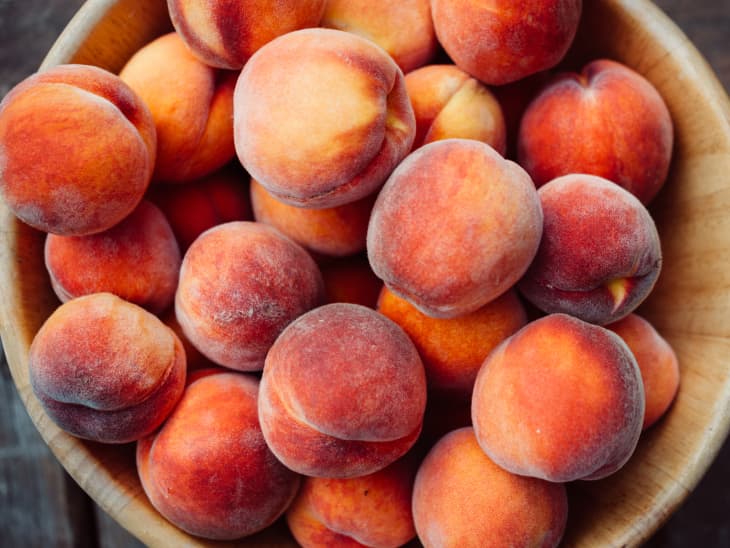

Before I’d moved to Atlanta, my experiences with peaches were limited to the canned cling kind. Buying them fresh at Long Island supermarkets was dicey — too often, they were too hard, too green, too ripe, or too bruised.
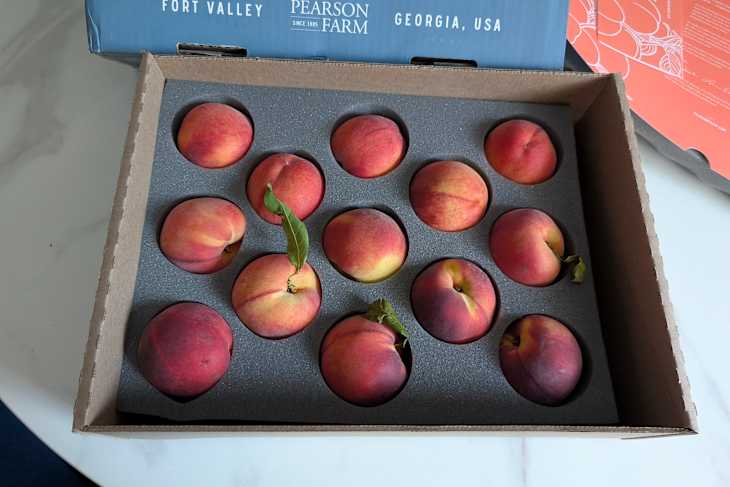
The first time I’d visited my best friends in Atlanta, they were determined to prove that fresh peaches trumped syrup-soaked ones. They ordered a case of famed Pearson Farm’s classic freestone peaches from the Georgia farm, and I was forever changed. Juice ran down my arm with every bite through the tender, fuzzy, thin skins, revealing vibrant sunset hues of apricot and magenta flesh. They tasted like summer sunshine, blossom nectar, and pure pleasure. This, I was told, is what a fresh peach should be.
Even though our neighbors in nearby South Carolina now outproduce “The Peach State” in peaches (we still lead in pecans!), I thought, who better to ask how to pick the perfect grocery store peach than the owner of this famous farm? Lawton Pearson, a fifth-generation farmer at Pearson Farm, generously shared his “best of” standards, and how we can pick like the Pearson pros from the aisles of our go-to grocer.
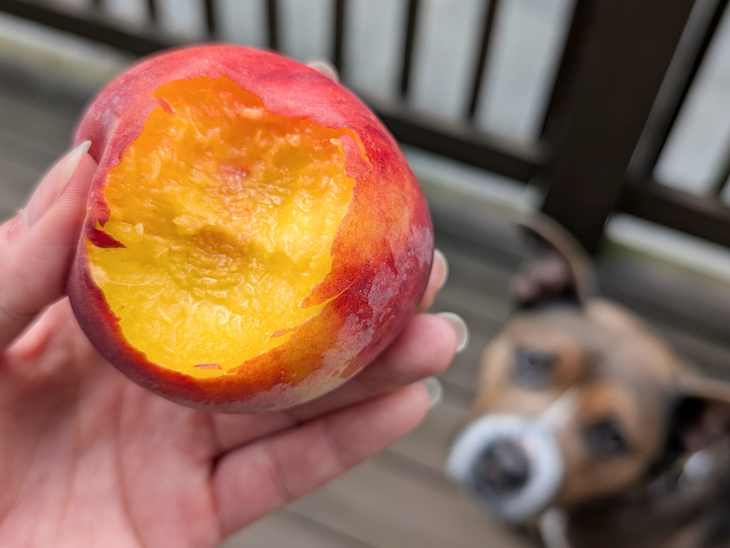
But First, What Impacts the Flavor (and Ripeness!) of a Peach?
A lot. The weather (if it’s been a rainy or dry season), the state of origin (soil composition, climate, sunlight exposure), and the different varieties (there are hundreds, according to the USDA all impact the flavor, sweetness, texture, and nutritional value of the fruit.
How often peaches are picked at the farm can also affect what shows up in the produce aisle. “Most farms will pick a tree twice and accept peaches that are too green,” Lawson says. “We pick each four to six times to allow the peaches to become tree-ripe.” The fruit has time to mature naturally, instead of being picked prematurely thanks to a fixed harvest date.
On top of picking schedules, how the stone fruit is stored and transported from farm to shelf will also impact the quality. Peaches are typically “stored at 36 degrees to slow ripening, keeping them harder so that, in theory, they’re less likely to bruise or blemish.” They should be kept at this temperature throughout transportation to the stores, explains Lawson, but mishandling can cause a number of issues — mainly over- or uneven ripening, along with degradation.
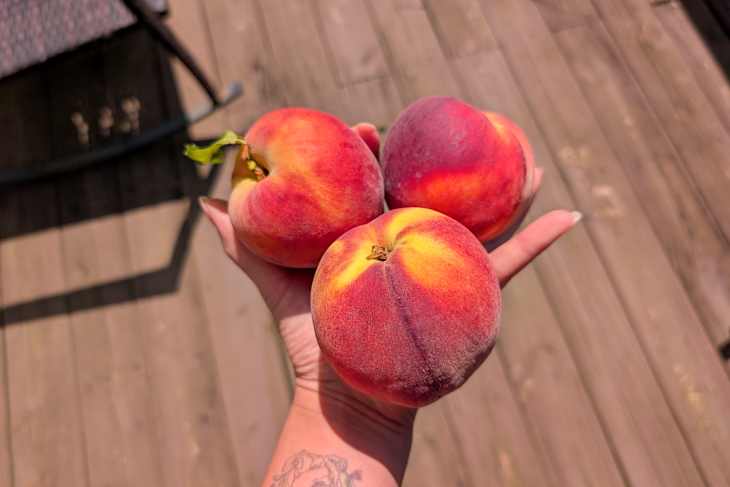
5 Tips You Should Know Before You Pick Your Next Peach
1. Green stems or skins are basically a no-go.
You might already be familiar with the “green stem” rule. Beyond the stem itself, Lawson confirms you want to focus on the skin around the stem. “If the skin is green, it was likely picked too early and therefore won’t be as sweet or juicy,” he says. So, in this case green is a no-go.
At the same time, Lawson notes “some varieties are ripe when the skin is still green.” He agrees it’s a good rule in general but encourages us to select peaches using all of our senses.
2. Follow the “tennis ball” rule.
The squeeze test is reliable, but the devil’s in the details. For instance, many shoppers test the pointed tip to avoid hurting the fruit, but “oftentimes, the tip is soft before the peach is ready, whereas squeezing the whole thing in the palm of your hand is a better indicator,” Lawson says. If it’s ripe, it’ll be strongly fragrant and “soft with a slight squishiness like a tennis ball.”
“You don’t want to squeeze too hard to create bruising,” he warns. “You should just feel a give when you palm it.” If it feels like a baseball, leave it room temperature to ripen” naturally. “If it feels like a tennis ball, enjoy it right away.”
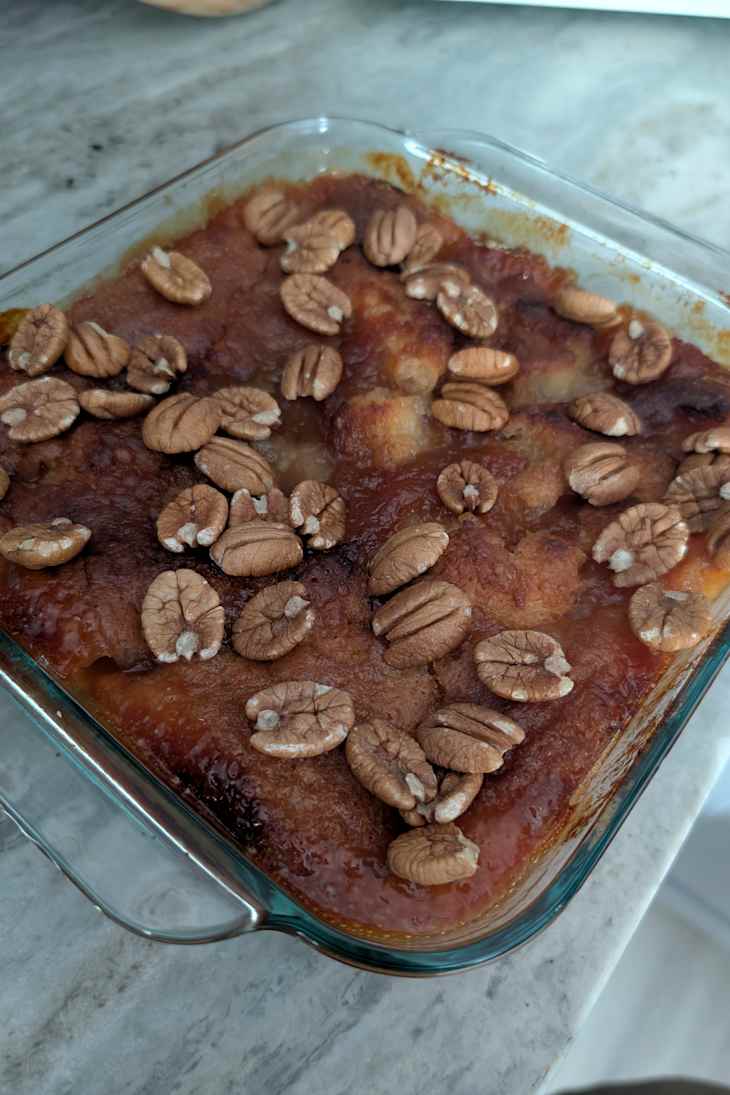
3. Flaws aren’t a non-negotiable.
Turns out, perfection isn’t everything. “Look for shades of yellow and red and minimal blemishes,” says Lawson, and don’t dismiss a peach out of hand for a single flaw. “If there’s a small blemish, it doesn’t ruin the whole peach,” he adds. “You can easily cut spots off and still enjoy the rest of the fruit.”
4. Adjust your peach picks based on your eating plans.
“There’s only a small window, typically just a day, between a peach being ripe and too ripe,” Lawson says. (This classic Seinfeld clip about the fictional Mackinaw peaches captures that moment perfectly.) Fortunately, each piece of fruit ripens at minutely different rates, allowing us to plan ahead.
“Get a softer peach if you’re going to eat it that day, but find a harder peach if you’re waiting to enjoy,” he advises. And remember to store your peaches in the refrigerator only when it reaches perfect ripeness — not before.
5. Sample as many types of peaches (from as many grocers) as you can.
Lawson dubbed this his “best advice.” He encourages shoppers with the luxury of time and access to “taste test different kinds from different stores or farms and see what you enjoy.” Then dig in! Peach season is short but, with these helpful hints, sweet for certain.
Got a hot tip for picking the best summer produce? Tell us about it in the comments below.
The Weekly Checkout
Sign up for The Weekly Checkout to get the most up-to-date grocery news, tips, and highlights.